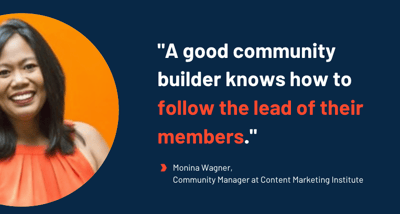
Content marketing continues to evolve into new forms of media every year.
Where once content marketing meant writing and publishing multiple blog posts a week, the truth these days couldn’t look more different. From videos to podcasts to interactive quizzes, businesses are constantly innovating and experimenting with new forms of content to engage their audiences.
However, one aspect has remained consistent—the importance of content marketing in sales and revenue growth for businesses of all sizes.
Content marketing sales is the strategic use of content marketing techniques to drive sales from new and returning customers.
These could be sales made by customers clicking on links in blog posts, purchases following a product demo video, or utilizing discount codes exclusively promoted in a business podcast episode. Content marketing aims to attract qualified leads to the business and, eventually, turn them into customers.
As a key marketing channel for many organizations, content marketing is often a critical driver in increasing conversions and revenue, along with building brand awareness online.
By employing tools like content analytics software, companies can track interactions with online content by both employees and visitors. This enables them to determine how well content is performing and what adjustments may need to be made in future content marketing strategies.
Businesses use numerous types of content marketing to promote their services or products and to educate prospective customers about industry-related topics.
Some of the most common types of content marketing materials are:
in revenue is predicted to be shared among global businesses in 2024 as a result of content marketing sales.
Source: Statista
An effective content marketing sales strategy can significantly impact a business's overall sales and revenue from online channels. It’s one of the best ways to entice users to move through the marketing cycle from inquiry to lead and, ultimately, a customer.
Search engine optimization (SEO) can be a lucrative marketing channel when paired with strong content marketing efforts. Conducting keyword research when putting together content plans is crucial. Subsequently, optimizing both written and video content for these search phrases can drive interested individuals to your business site to find what they’re looking for.
Not all content on your website needs to be accessible straight away. Consider placing more informative, educational content, such as ebooks and whitepapers, behind a gated system. With this approach, users must input their details first, which is an effective way to gather information for your email list and input potential inquiries into your customer relationship management (CRM) system.
Content that delivers relevant and timely information on topics your audience seeks answers to can go a long way in boosting your company’s visibility. When combined with SEO efforts, your content marketing has the potential to bring plenty of new faces to your website. Using popular hashtags or optimizing your profiles for searched-for phrases on social media can also amplify the reach of your content.
Establishing yourself as an expert in your industry builds customer trust and loyalty, which all businesses should aim to achieve. Strong content that educates and informs users can help you stand out from your competitors and distinguish your business as the go-to source for information about important topics in your field.
Regardless of the content type you opt for, it should always serve a purpose that ties back into key business goals. Whether that’s increasing sales (which, ultimately, every goal is tied back to!) or building a loyal audience who will eventually become customers, your content creation approach should follow best practices to help you on the path to success.
To maximize your chances of sales through content marketing, you need to be clear on who exactly you’re marketing to. Developing buyer personas can guide your content team on potential customers' problems or challenges. This will lead to precise tailoring of content to address their needs.
Not every type of content will resonate with the same people. Aim for a mix of content marketing formats, as much as your resources and budget allow, and create content that works best on each channel. For instance, a product demo will likely work better as a video rather than a written or audio post. In contrast, a step-by-step guide to educate on a particular topic may be more effective in a written blog post or newsletter.
Once you’ve mapped out your content ideas, you must consider how you’ll promote that content. Simply posting it won’t do much good if your audience isn’t aware it’s available for them to enjoy or learn from. By leveraging channels, such as social media platforms or email newsletters, you can build distribution into your content marketing strategy.
Content analytics tools offer invaluable insights into when your audience engages with your content and how these patterns evolve. Using this data, you can synchronize your content creation and promotion strategy with peak audience engagement times.
Content marketing can be a lucrative traffic and revenue driver for all kinds of businesses. It’s the perfect opportunity to showcase your brand’s expertise in your industry while bringing unique value and education to your loyal followers.
Stay on top of your catalog of content with web content management software that allows you to create, edit, and publish digital content online.
Holly Landis is a freelance writer for G2. She also specializes in being a digital marketing consultant, focusing in on-page SEO, copy, and content writing. She works with SMEs and creative businesses that want to be more intentional with their digital strategies and grow organically on channels they own. As a Brit now living in the USA, you'll usually find her drinking copious amounts of tea in her cherished Anne Boleyn mug while watching endless reruns of Parks and Rec.
Monina Wagner, Community Manager at Content Marketing Institute, shares her unlikely foray...
 by Lauren Pope
by Lauren Pope
Content marketers around the world gathered in San Diego this April for the inaugural Content...
 by Devin Pickell
by Devin Pickell
There are thousands of content jobs on the market right now.
 by Alexa Drake
by Alexa Drake
Monina Wagner, Community Manager at Content Marketing Institute, shares her unlikely foray...
 by Lauren Pope
by Lauren Pope
Content marketers around the world gathered in San Diego this April for the inaugural Content...
 by Devin Pickell
by Devin Pickell


